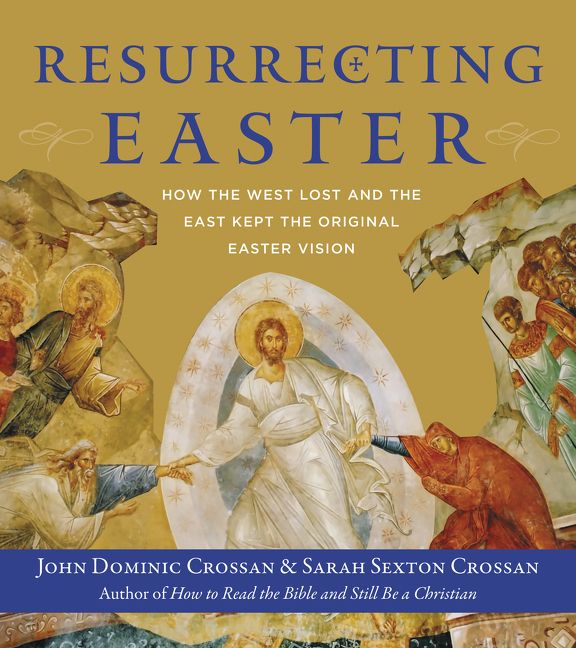 By John Dominic Crossan and Sarah Sexton Crossan, Harper Collins, 2018.
By John Dominic Crossan and Sarah Sexton Crossan, Harper Collins, 2018.
Biblical scholars John Dominic Crossan and the late Marcus Borg conducted pilgrimages over the years to Italy and Turkey, two of which I was fortunate to attend.
We learnt that all the major events in Christ’s life are described in the Gospels but no direct reports of the bodily resurrection of Jesus. Instead, many artistic impressions of Jesus’ resurrection were created, some we visited in churches, caves and museums.
The first direct image appears by 400 and is part of the West’s individual resurrection tradition. The second direct image by the year 700 is part of the East’s universal resurrection tradition named the Anastasis, Greek for resurrection.
For 15 years Dominic and Sarah Crossan travelled across Europe and Asia creating a comprehensive photographic archive of this resurrection imagery. How timely when this book with Sarah’s images, the ancient texts which inspired them and Dominic’s scholarly interpretation arrived for Easter.
The cover image of their book is from the 1300s Chora Church in Istanbul, where we gazed at this beautiful Anastasis mosaic high in the half dome of the apse of the risen Christ, enveloped by a star studded mandorla, grasping the wrists of Adam and Eve, the personification of humankind. Christ pulls them from their tombs while standing firmly on the shattered gates of hell with lock and bolts strewn around his feet. Christ is trampling down a well-trussed Hades, guardian and personification of death, who is lying prone beneath his feet.
Looking on are a rough clad John the Baptist and Solomon and David with crowns. Among an unidentified group on the other side is Abel with his shepherd’s crook, the victim of the violence by which the Bible first defines sin, the ultimate cause of Jesus’ death. A death where the power of evolution represented by the Anastasis creates a movement of non-violence offering the Gospel of peace to a violent world.
In the second millennium why did the West gut this heart of Christianity’s understanding of the resurrection by rejecting this once-common universal iconography in favour of the original individualistic vision? Resurrecting Easter re-introduces this inclusive, community-based ideal that offers renewed hope and possibilities for our world. In the final images, the symbolism of an Anastasis image in the twin arches of the Resurrection Gate in Moscow’s Red Square challenges the display of Russian military might.
Through this amazing re-visioning of Easter, such profound scholarly insights should empower us as a church “.. to confess The Lord in fresh words and deeds” (Para. 11, Uniting Church Basis of Union, 1992).
Dr Richard Smith